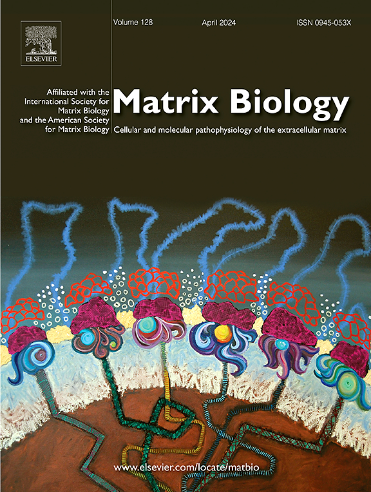Exploring basement membrane dynamics through cross-scale imaging, manipulation, and molecular mapping
IF 4.8
1区 生物学
Q1 BIOCHEMISTRY & MOLECULAR BIOLOGY
引用次数: 0
Abstract
The basement membrane (BM), a specialized extracellular matrix (ECM), provides structural support for epithelial, endothelial, and other parenchymal cells. Once considered a static scaffold, the BM is now recognized as a dynamic and complex nanostructure composed of a diversity of molecules that actively regulate cell behavior and tissue organization. Its molecular composition, assembly, and remodeling are precisely controlled in a tissue- and stage-specific manner, contributing to the regulation of local and global mechanical properties and biochemical signaling. Understanding BM structure and function requires integrated approaches across biological scales—from nanoscale molecular interactions to tissue-level architecture. In this review, we highlight advances in three methodological areas: (1) imaging techniques that reveal BM nanostructure and dynamics, (2) manipulation strategies that uncover causal roles of BM components, and (3) omics-based approaches that map BM composition and cellular sources. Integrating these strategies enables the bridging of molecular events and organ-level functions, offering new insights into how the BM is involved in development, homeostasis, and disease progression. The aim of this review is to provide researchers with a comprehensive perspective on evolving tools for dissecting BM structure, dynamics, and function.
通过跨尺度成像、操作和分子作图探索基底膜动力学。
基底膜(BM)是一种特殊的细胞外基质(ECM),为上皮细胞、内皮细胞和其他实质细胞提供结构支持。BM曾经被认为是一个静态支架,现在被认为是一个动态和复杂的纳米结构,由多种分子组成,积极调节细胞行为和组织组织。它的分子组成、组装和重塑以组织和阶段特异性的方式精确控制,有助于调节局部和全局的机械特性和生化信号。了解BM的结构和功能需要跨生物尺度的综合方法-从纳米级分子相互作用到组织级结构。在这篇综述中,我们强调了三个方法学领域的进展:(1)揭示BM纳米结构和动力学的成像技术,(2)揭示BM成分因果作用的操作策略,以及(3)基于组学的方法,绘制BM成分和细胞来源。整合这些策略可以将分子事件和器官水平功能连接起来,为脑转移如何参与发育、体内平衡和疾病进展提供新的见解。这篇综述的目的是为研究人员提供一个全面的视角,以了解不断发展的工具来解剖脑基底膜的结构、动力学和功能。
本文章由计算机程序翻译,如有差异,请以英文原文为准。
求助全文
约1分钟内获得全文
求助全文
来源期刊

Matrix Biology
生物-生化与分子生物学
CiteScore
11.40
自引率
4.30%
发文量
77
审稿时长
45 days
期刊介绍:
Matrix Biology (established in 1980 as Collagen and Related Research) is a cutting-edge journal that is devoted to publishing the latest results in matrix biology research. We welcome articles that reside at the nexus of understanding the cellular and molecular pathophysiology of the extracellular matrix. Matrix Biology focusses on solving elusive questions, opening new avenues of thought and discovery, and challenging longstanding biological paradigms.
 求助内容:
求助内容: 应助结果提醒方式:
应助结果提醒方式:


